
e-Health literacy for the promotion and maintenance of health
Keywords
Health literacy, e-health literacy, use of information, web portal, health
Author
University of Dubrovnik
Languages
English
Description:
The education is designed to provide relevant information to improve health literacy, i.e. e-health literacy. The training will focus on developing and improving skills to obtain relevant information and identify potential sources that contain disinformation. about health and treatment. They will also learn how to verify information before it is shared or used for treatment purposes. Topics covered range from learning about the concept of health literacy, the concept of e-health literacy, finding and using relevant information, recognizing disinformation., and learning how to use fact-checking methods. Upon completion of the training, the necessary skills will be acquired to find relevant information about health and specific medical conditions and to recognize potential sources of disinformation.
Objectives / Goals / Learning outcomes
- Understand the concept of health literacy. Recognize disinformation related to health and its impact on individuals.
- Develop and improve knowledge and critical thinking skills to recognize and evaluate potential health-related disinformation.
- Apply basic techniques to verify information using relevant sources.
Contents
e-Health literacy for the promotion and maintenance of health
Understanding the concept of Health Literacy
Definition of Health Literacy
|
Health literacy encompasses personal, cognitive, and social skills that determine a person's ability to access, understand, and use (medical) information to promote and maintain good health.
Health literacy is sometimes referred to as health information literacy.
|
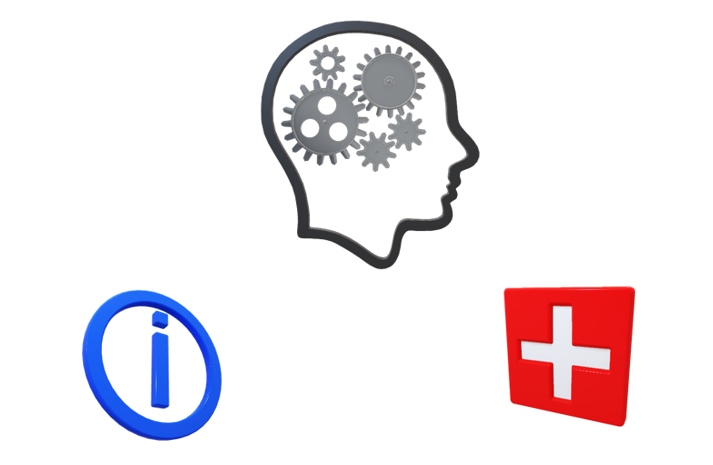 |
|
The Medical Library Association (MLA) defines health literacy as:
"a person's ability to recognize the need for information, know where and how to find that information, and use the information to make good decisions about one's health" (MLA).
|
 |
|
Levels of Health literacy
Three levels of Health literacy:
- Functional health literacy
- Interactive health literacy
- Critical health literacy
Functional health literacy
- Encompasses the basic knowledge and skills that enable the effective functioning and management of health care
- Anyone in the role of a patient should be able to read and understand medical information
- Anyone in the role of a patient should be able to access healthcare services within the healthcare system (e.g. find the service or clinic needed within an outpatient clinic, hospital, etc.)
Interactive health literacy
- Represents advanced knowledge and skills that enable participation in specific health activities
- Understanding of different forms of health information
- Understanding of its application in a changing environment
- IMPORTANT to remember the rights and responsibilities that everyone has as a potential patient within the healthcare system
- Of particular note is the patient's right to informed consent and informed choice (the right to make decisions about their own health and treatment in collaboration with their physician).
Critical health literacy
- Represents the most advanced knowledge and skills of a health and social nature that enable critical consideration of health information
- Improvement of personal and social skills
- Understanding of the social, political, and economic levels of health and healthcare system.
|
Sources of health information
|
There are many sources of health information.
- First and foremost is the healthcare professionals – doctors, nurses and other healthcare staff with whom the patient comes into contact
- Various printed materials: promotional materials, brochures, magazines, newspapers, books
- Media: radio, TV, social networks, e-information - Internet portals
- Information from other people: friends, families, associations and patients encountered during the treatment process.
|

|
|
Detmer et al. (2003) divide the sources of health information into several groups, depending on how individuals come into contact with the information:
- through personal contacts (with family members or friends, physicians, pharmacists, support groups)
- through what they hear, see, or read (in sources provided to them by the physician or an institution - brochures or health documentation; in the media; or through education, i.e. courses and workshops)
- active search for information (via the Internet, printed sources, patient groups)
E - information, i.e. e-health literacy, is included in the group of active search for health information.
|
|
Connection of health literacy with health and quality of life
- Health literacy is cited as one of the social determinants of health (Rowlands et al., 2017).
- Research has shown that people with low health literacy have more difficulty accessing healthcare services, are hospitalized more often, do not follow health recommendations (improper use of medication, non-compliance with dietary plans, lack of exercise, etc.), and are less likely to use preventive protective measures and screenings.
|
 |

Centers for Disease Control and Prevention (CDC), Center for Preparedness and Response : Available at: https://www.cdc.gov/cpr/infographics/healthliteracy.html
As low health literacy affects the poor health of individuals, it also places a burden on the social community:
High levels of health literacy are associated with improved ability to care for oneself, control of chronic diseases, greater availability of appropriate health services at lower cost, and better health outcomes, and a reduction in health-related uncertainty (Tardy and Hale, 1998), all of which contribute greatly to independence and a better quality of life.
|
e-health literacy
- The use of information technology for health requires e-health literacy – the ability to read, use a computer, search for information, understand and contextualize health information
- e-Health literacy requires an individual's ability to search, find, evaluate, and apply information from the electronic environment to solve a health problem
|
 |
- With the increase in the elderly age group, the demand for training in e-health literacy to better navigate and understand electronic health information has also increased in developed countries
- Computer-based electronic health literacy (e-health literacy) is designed to facilitate access to health information, services, and care
- An important aspect of searching for health information on the Internet is the active role of individuals in searching for and selecting the desired information
|
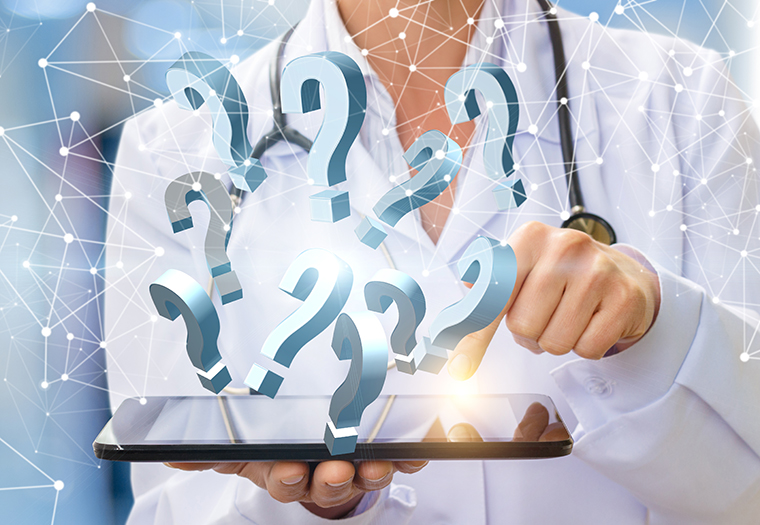 |
- Research among older people has shown that the outcome of searching for health information on the Internet is the development of a strategy for dealing with diseases or specific conditions
- that those who use this method of obtaining information believe the content on the Internet
- acquire new knowledge
- and correct their health behaviour
(Pourrazavi et al., 2020) |
 |
- Content on the Internet is less regulated and more "susceptible" to the marketing of false and unverified information.
- Other sources of health information such as books, magazines, or television less "susceptible”
- Individuals need to be critical when using public content
|
 |
- Information can be divided into false information and disinformation
- Information that is published on the assumption that it is correct (published unintentionally) and turns out to be false after some time is called misinformation, while information that is intentionally designed and published with the aim of causing harm or financial gain and turns out to be false is called disinformation
- For this very reason, it is necessary to acquire certain knowledge so that the consumption of certain news and information is harmless to the health of the individual
|
|
Example: Treatment of varicose veins at home
Example: Experts Warn Against Inhaling Bleach After Trump Comments
|
Example: Treatment of blood pressure
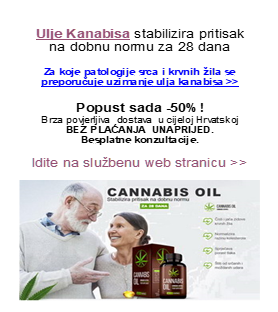
|
|
The motives behind Health disinformation
- Fake News - Publications refer to intentionally fabricated or false information presented as true for promotional purposes, e.g. to sell a drug, a procedure to treat a particular disease - condition, or for some other reason.
- The information includes dangerous Fake News and misleading health information with false claims that can directly endanger lives and seriously harm the health of individuals.
- It is important to evaluate the sources, i.e. check the credibility of the information, to avoid fraud, which can have serious consequences in the case of a disease.
- It is essential to examine the motive and purpose of the publication.
What could be the motives for Health disinformation?
- Selling content - economic gain. - False announcements are usually motivated by financial incentives. Individuals or groups spread false information about a particular product - a drug or therapeutic procedure - to promote it and make a financial gain.
- Deliberately causing harm
What can be the purpose of disinformation?
- Political basis - manipulation of public exchange (during the Covid 19 pandemic)
- Publication with the purpose of publicity (paid advertising)
|
The role of social media
- Social media plays an important role in spreading disinformation, which was especially evident during the coronavirus pandemic and the introduction of quarantine, when social media was the primary source of information
- With the spread of the pandemic and the development and introduction of the vaccine against the disease COVID -19, a number of misinformation was spread on Internet platforms about the safety of the vaccine, what to do in case of illness, etc.
- One of the examples is that hand washing does not help in fighting COVID -19, as well as advertising a number of "medicines" to treat COVID -19, the use of which can have serious consequences for human health, e.g. "a coronavirus infection can be cured if you drink bleach or pure alcohol".
- Social media platforms reinforce and spread disinformation through various content created by users who are not authorised to provide information on health and treatment. For this reason, the European Union and its member states are stepping up their activities and taking measures to combat disinformation.
- Available at: https://www.consilium.europa.eu/hr/policies/coronavirus/fighting-disinformation/
- The EU institutions are working to raise awareness of the dangers of disinformation and promote the use of credible sources. To this end, a list of relevant sources of information (official sources of information) in the EU and the relevant EU institutions and international organisations has been published.
- As a result of the activities in the fight against disinformation, a JOINT COMMUNICATION of the EUROPEAN PARLIAMENT, THE EUROPEAN COUNCIL, THE COUNCIL, THE EUROPEAN ECONOMIC AND SOCIAL COMMITTEE AND THE BOARD OF THE REGIONS entitled "The fight against misinformation about the disease COVID-19 - Recognition of the facts” was published in June 2020, in which the European Commission and the High Representative will propose concrete measures to combat the problem of the spread of disinformation.
- The document is available at: (https://eur-lex.europa.eu/legal-content/HR/TXT/PDF/?uri=CELEX:52020JC0008)
- The wide reach of social media, as well as the availability of its use, makes it a fertile ground for the rapid spread of false or inaccurate information that can have very serious consequences for the health of individuals.
|
Recognizing health disinformation
Credibility of content - How to recognize health disinformation?
When searching for websites, i.e. posts on internet portals
- check the URLs !
- check if the portal has an imprint !
- check the identities of the people who edit it !
The source is credible
- if there is an expert, professional person (signed author) behind the publication,
- if the sources of the information are actual interlocutors (first and last name) or relevant healthcare institutions/organisations (primary, secondary, tertiary level of healthcare),
- official health portals, i.e. websites
- portals of health care institutions, civil society associations, official websites of the Ministry and the Institute of Public Health are
- if it can be seen that the information published in a particular medium (Internet portal) is regularly updated (publication date marked).
- in advertising, when only positive values are emphasised for a particular product (drug) or service. If it is an article, check the references and their credibility
|
How to recognize the credibility of the source?
- Check if the website is accredited
- Check if the authors and editors are clearly highlighted
- Check if the article is signed by the author
- Check the references
- Check if the site is updated regularly: the date of the last modification is indicated
- Check the grammar
- Check the motive and purpose of the publication
|
 |
|
Ways of checking sources and facts
|
Various criteria can be used to assess the relevance and accuracy of the information found.
- checking the date of publication
- checking the source,
- whether the article is signed by the author,
- whether the information can be found on other websites (websites - portals specializing in health),
- whether it is an article,
- whether the information is supported by quotes - assess the credibility of the quotes,
- purpose of the article: whether the article is a paid advertisement or has a political basis.
|
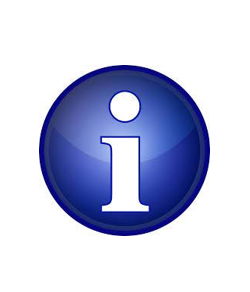 |
|
Responsible Online Behaviour
Ways of recognizing health disinformation
Use accredited websites
- websites can be accredited if they meet eight conditions
- the authors and publishers are clearly highlighted
- it is stated that the website and its content cannot replace a visit to the doctor
- user’s data is protected
- the website is updated: the date of the last modification is indicated,
- the information is objective and complete
|
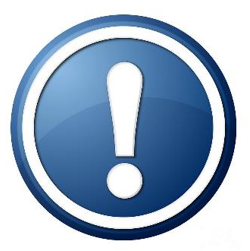 |
- the interface of the website is accessible to the user and has a highlighted task
- all sources of funding are clearly indicated
- all advertisements must be marked as advertising so that the reader can distinguish them from the health content of the website
- search for specialized websites whose content is focused on health prevention and disease prevention, as well as websites - portals where one can get answers to health-related questions.
|
Examples of accredited websites:
|
Responsible use of online sources for health information
A responsible approach to the world of the Internet, in this case health information, requires following a few rules.
- Review information before sharing or using it with others.
- Look for reliable sources and ask a professional (doctor, nurse/technician) to confirm the accuracy of the information.
- Objectively assess the credibility of content and consider alternative perspectives before using or sharing information.
- Verify the credibility of sources by looking for evidence and checking claims, especially in cases of "miracles" and easy solutions in treating and curing certain conditions and diseases (e.g. chronic diseases, diabetes, arthritis, etc.), which calls into question the veracity.
- Look for other sources to educate yourself and better understand the topic (disease, condition)
|
Responsible online behaviour
- Verify information before using or sharing it: Verify the authenticity and credibility of information from trusted sources or fact-checking organizations (medical professionals, specialized health care facilities, etc.) before sharing it
- Use trusted - specialized sources: Rely on trusted sources of health information to avoid misinformation. Follow specialized fact-checking websites and experts in various health fields
- Fact-checking and analysis-Develop critical thinking skills by reviewing the information you find. Assess the credibility of the source, examine the evidence
- Use fact-checking tools: Use fact-checking tools and resources available on the Internet to verify the accuracy of claims – search for other specialized websites - sources to verify stated health-related facts.
- Report and point out disinformation: If you come across false or inaccurate information, report it to the platform or social network where it can be found.
Guidelines for responsible, appropriate, behaviour in using technology

|
Bibliography
- Pourrazavi, S., Kouzekanani, K., Bazargan-Hejazi, S., Shaghaghi, A., Hashemiparast, M., Fathifar, Z., & Allahverdipour, H. (2020). Theory-based E-health literacy interventions in older adults: a systematic review. Archives of Public Health, 78, 1-8.
- Rowlands, G., Shaw, A., Jaswal, S., Smith, S., & Harpham, T. (2017). Health literacy and the social determinants of health: A qualitative model from adult learners. Health Promotion International, 32(1), 130–138. https://doi.org/10.1093/heapro/dav093
- Coughlin, S. S., Stewart, J. L., Young, L., Heboyan, V., & De Leo, G. (2018). Health literacy and patient web portals. International journal of medical informatics, 113, 43-48.
- Burkhardt, J. Truth, Post-Truth, and Information Literacy : Evaluating Sources. // Information literacy and libraries in the age of fake news / uredila Denise E. Agosto. Santa Barbara; Denver : Libraries Unlimited, 2018. Str. 94-105.
- Ecker, U. et al. Do People Keep Believing Because They Want To? : Preexisting Attitudes and the Continued Influence of Misinformation. // Memory & Cognition 42, 2(2014), str. 292-304. Dostupno na: https://www.researchgate.net/publication/255950545_Do_People_Keep_Believing_because_They_Want_To_Preexisting_Attitudes_and_the_Continued_Influence_of_Misinformation (20.8.2023.).
- A. (2006). eHEALS: the eHealth literacy scale. Journal of medical Internet research, 8(4), e507. https://pubmed.ncbi.nlm.nih.gov/17213046/
- Chung, S. Y., & Nahm, E. S. (2015). Testing reliability and validity of the eHealth Literacy Scale (eHEALS) for older adults recruited online. Computers, informatics, nursing: CIN, 33(4), 150.
- De Brún, C. Health literacy and health information literacy, and the role of librarians. Knowledge for Healthcare. 2019. Dostupno na: https://kfh.libraryservices.nhs.uk/health-literacy-and-health-information-literacy-and-the-role-of-librarians/ (20.8.2023.).
- Detmer, D. et al. The Informed Patiend : Study Report. Cambridge University Health, 2003. Dostupno na: https://citeseerx.ist.psu.edu/viewdoc/download?doi=10.1.1.471.7791&rep=rep1&type=pdf (15.1.2021.).
| |


Keywords
Health literacy, e-health literacy, use of information, web portal, health
Author
University of Dubrovnik
Languages
English
The education is designed to provide relevant information to improve health literacy, i.e. e-health literacy. The training will focus on developing and improving skills to obtain relevant information and identify potential sources that contain disinformation. about health and treatment. They will also learn how to verify information before it is shared or used for treatment purposes. Topics covered range from learning about the concept of health literacy, the concept of e-health literacy, finding and using relevant information, recognizing disinformation., and learning how to use fact-checking methods. Upon completion of the training, the necessary skills will be acquired to find relevant information about health and specific medical conditions and to recognize potential sources of disinformation.
Objectives / Goals / Learning outcomes
e-Health literacy for the promotion and maintenance of health
Understanding the concept of Health Literacy
Definition of Health Literacy
Health literacy encompasses personal, cognitive, and social skills that determine a person's ability to access, understand, and use (medical) information to promote and maintain good health.
Health literacy is sometimes referred to as health information literacy.
"a person's ability to recognize the need for information, know where and how to find that information, and use the information to make good decisions about one's health" (MLA).
Levels of Health literacy
Three levels of Health literacy:
Functional health literacy
Interactive health literacy
Critical health literacy
Sources of health information
There are many sources of health information.
Detmer et al. (2003) divide the sources of health information into several groups, depending on how individuals come into contact with the information:
E - information, i.e. e-health literacy, is included in the group of active search for health information.
Connection of health literacy with health and quality of life
Centers for Disease Control and Prevention (CDC), Center for Preparedness and Response : Available at: https://www.cdc.gov/cpr/infographics/healthliteracy.html
e-health literacy
- Research among older people has shown that the outcome of searching for health information on the Internet is the development of a strategy for dealing with diseases or specific conditions
- that those who use this method of obtaining information believe the content on the Internet
- acquire new knowledge
- and correct their health behaviour
(Pourrazavi et al., 2020)Example: Treatment of varicose veins at home
Example: Experts Warn Against Inhaling Bleach After Trump Comments
Example: Treatment of blood pressure
The motives behind Health disinformation
What could be the motives for Health disinformation?
What can be the purpose of disinformation?
The role of social media
Recognizing health disinformation
Credibility of content - How to recognize health disinformation?
When searching for websites, i.e. posts on internet portals
The source is credible
How to recognize the credibility of the source?
Ways of checking sources and facts
Various criteria can be used to assess the relevance and accuracy of the information found.
Responsible Online Behaviour
Ways of recognizing health disinformation
Use accredited websites
Examples of accredited websites:
Responsible use of online sources for health information
A responsible approach to the world of the Internet, in this case health information, requires following a few rules.
Responsible online behaviour
Guidelines for responsible, appropriate, behaviour in using technology